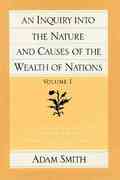Question
Answer the following questions: a - Explain the difference between positive and normative questions and give examples for each: b - Explain negative externality and
Answer the following questions: a - Explain the difference between positive and normative questions and give examples for each: b - Explain negative externality and give example(s). c - Explain positive externality and give example(s). d - Explain what Marginal Product of Labor is. e - Explain what Decreasing Marginal Return is. f - Explain what Increasing Marginal Return is. g - Explain what Constant Marginal Return is. h - Explain the Efficiency concept in Economics. Q2[60 points] Aisha and Betty are two different economic agents with different skills, and are owners of two different commodity production units in which they are able to produce only corn and iron, using only one input, labor. Suppose each currently produces both corn and iron, and they do not trade. And assume that they could produce the following combinations of corn in bushels per month and iron in tons per month: Aisha's Production Unit Labor Input (Numer of Workers) Total Output (Corn in bushels) Marginal Product 0 0 - 20 50 $ 40 90 $ 60 120 $ 80 140 $ 100 150 $ Labor Input (Numer of Workers) Total Output (Iron in tons) Marginal Product 0 0 - 20 3 $ 40 6 $ 60 9 $ 80 12 $ 100 15 $ Alternative Bushels of Corn Tons of Iron I 150 0 II14032 A1.nb 40 90 $ 60 120 $ 80 140 $ 100 150 $ Labor Input (Numer of Workers) Total Output (Iron in tons) Marginal Product 0 0 - 20 3 $ 40 6 $ 60 9 $ 80 12 $ 100 15 $ Alternative Bushels of Corn Tons of Iron I 150 0 II 140 3 III 120 6 IV 90 9 V 50 12 VI 0 15 Betty's Production Unit Input (Numer of Workers) Total Output (Corn in bushels) Marginal Product 0 0 - 20 75 $ 40 175 $ 60 300 $ 80 450 $ 100 625 $ Labor Input (Numer of Workers) Total Output (Iron in tons) Marginal Product 0 0 - 20 6 $ 40 18 $ 60 36 $ 80 60 $ 100 90 $ Alternative Bushels of Corn Tons of Iron I 625 0 II 450 6 III 300 18 IV 175 36 V 75 60 VI 0 90 a) Calculate the marginal product of labor on the tables for both corn and iron productions in Aisha's and Betty's productions units on a table. A1.nb 3 a) Calculate the marginal product of labor on the tables for both corn and iron productions in Aisha's and Betty's productions units on a table. b) Draw the individual production curves for both corn and iron productions for Aisha and Betty, being as exact and neat as possible. Put "number of workers" as input on the positive horizontal axis. Assume that the dots define a complete curve. State what kind of marginal returns is presented in the production relations for each production curve, i.e., decreasing, constant, increasing marginal returns. c) Draw the PPF for corn and iron for both Aisha and Betty, being as exact and neat as possible. Put iron on the horizontal axis. Assume that the dots define a complete curve. d) Is it possible or efficient to produce 100 bushels of corn and 10 tons of iron for Aisha and Betty? Explain why? e) If both Aisha and Betty are currently producing Alternative III, the average unit opportunity cost of moving to Alternative II (the average opportunity cost of each unit increase in corn production) is .......... tons of iron in Aisha's production unit, and ............... tons of iron in Betty's production unit. f) Is the opportunity cost of producing corn higher or lower moving from alternative VI to V than moving from alternative II to I for Aisha and Betty? Why? Compare your results.
Step by Step Solution
There are 3 Steps involved in it
Step: 1

Get Instant Access to Expert-Tailored Solutions
See step-by-step solutions with expert insights and AI powered tools for academic success
Step: 2

Step: 3

Ace Your Homework with AI
Get the answers you need in no time with our AI-driven, step-by-step assistance
Get Started


